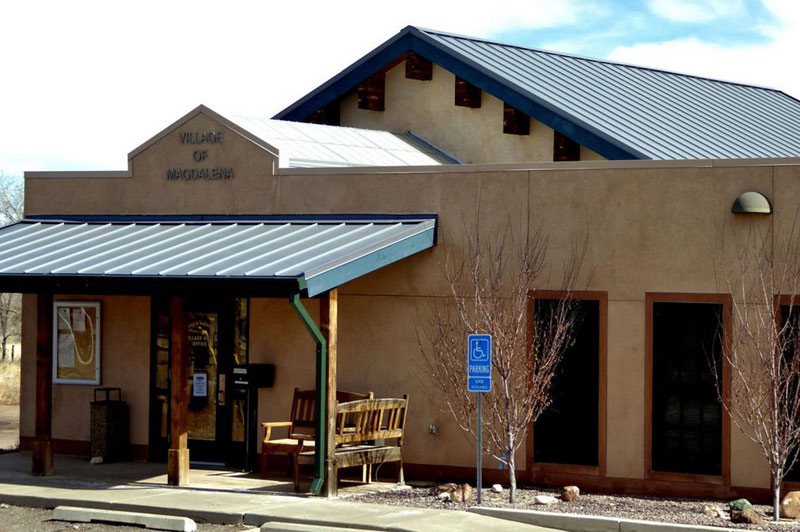Oh, those tumbling tumbleweeds!
Oh, the mess they’ve created among the drainage ditches and ranch lands in Socorro County this past month.
They’ve been roaming the countryside like a kitten playing with a ball of twine. In fact, they’ve invaded the rural landscapes so bad, some folks haven’t been able to open their doors, barn doors or even open or shut their cattle gates.
It’s one thing for tumbleweeds to roll aimlessly across the road or pile up along the fences, but it’s another when they start to fill up the drainage ditches. Now there are plenty of folks trying to figure how to get rid of them before fire season.
But for now, they’re a bit of a menace for everybody.
Rebecca Moeller, a San Acacia rancher, has seen more than her fair share of tumbleweeds invading her property these past few weeks.
“Here in New Mexico, we always have a couple hundred tumbleweeds to deal with, no matter where you live. But this year, I have been battling them by the thousands,” Moeller said. “They’re so thick that I honestly don’t know what to do.”
She said, in the past, when tumbleweeds piled up in the ditch that goes through her property, she had no problem burning them on her own. This time around, the volume is so large she’s concerned it could cause a fire.
“I’m really in a dilemma, I know it’s my problem to solve but I don’t know what the solution is,” Moeller said.
She said that the tumbleweeds are coming from the neighbor west of her because they have let their land go fallow. She contacted the Middle Rio Grande Conservancy District but has yet to get confirmation if they are part of the fallow program. She was able to confirm, however, that the fallow program does not require landowners who are participating to maintain their weeds.
“Somebody else must be experiencing what I’ve experienced because of the fallow program. And I would like the conservancy to address that in any future programs that they offer,” Moeller said.
She said that although she has let her neighbors know that she is going to figure out how to take care of the problem, it’s still unclear who owns the ditch.
The MRGCD told her that the ditch is not owned by them and so they are not responsible for it, but when she went to the county to find out who owns it, they were puzzled and couldn’t figure it out either.
Plant invasion
While tumbleweeds may be no more than a prop in your favorite Western, they are the primary antagonist in the story of one of the fastest plant invasions in the history of the United States.
Tumbleweed, wind witch and Russian cactus are among the many common names for the Russian thistle (Salsola tragus) – though it isn’t a thistle or a cactus at all and is part of the Amaranth family.
This plant is an icon of the Old West, featured in movies, song lyrics and more, however, its representation in media may be somewhat misleading.
Russian thistle is highly invasive in North America. It has followed in the wake of agriculture and other human activities since the late 1800s, and its ability to spread prolifically, makes it a threat to ecosystems, human health and the economy.
Its invasion was, at least in part, one of our own makings and we’re still living with the repercussions of it.
Contributing to this story was El Defensor Chieftain Editor Jessica Carranza Pino.




















